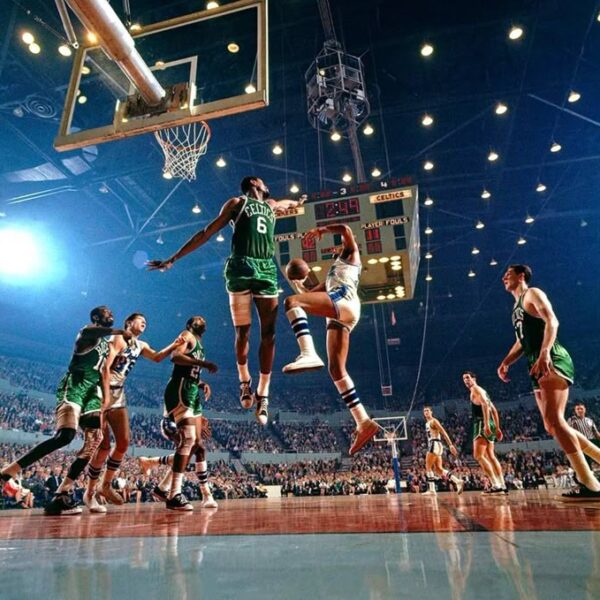Basketball continues to thrive across the Philippines — from barangay courts to pro arenas. One of the most common questions for newcomers and even avid fans is: how many players in basketball team including substitutes? This guide aims to clarify the full team composition in various leagues, the strategic role of substitutes, and how the rules apply across different levels of competition locally and internationally.
Introduction to Basketball Team Sizes
Basketball is one of the most popular sports in the Philippines, played from professional arenas to local barangay courts. A common question that fans, players, and even new coaches often ask is: how many players in basketball team including substitutes? Understanding team composition is essential not only for game regulations but also for player management and strategic gameplay. This guide provides an in-depth look at team sizes, substitutes, and variations across different levels of basketball.
Standard Basketball Team Structure
To answer how many players are on a basketball team including substitutes, it’s crucial to understand the basic team structure. A standard basketball team consists of two main categories of players:
- Starters: The five players who begin the game on the court.
- Substitutes: Players who are on the bench and can be rotated into the game.
Substitutes play a key role in managing player fatigue, adjusting to in-game scenarios, and offering tactical flexibility.
Typical Number of Players Per Team
Globally, the total number of players in a basketball team, including substitutes, generally ranges from 12 to 15. Here’s a breakdown by level:
- NBA: 15 players max; 13 active per game.
- FIBA: 12 players active for each game.
- PBA (Philippine Basketball Association): Up to 15 registered players per team.
In the Philippines, local leagues often follow similar formats but may vary depending on the tournament organizer and budget availability.
Roster Sizes Across Different Leagues
Let’s compare how different leagues manage their team rosters:
| League | Max Roster Size | Active Players per Game |
|---|---|---|
| NBA | 15 | 13 |
| PBA | 15 | 12-13 (varies) |
| FIBA | 12 | 12 |
| UAAP/NCAA Philippines | 15 | 15 |
| High School/Barangay Leagues | 10–15 | Varies |
Understanding these figures helps clarify how many players in basketball team including substitutes depending on the competition level.
Five Key Basketball Positions Explained
Regardless of the number of players, every basketball team features five key positions that define a player’s role and contribution to the game:
Point Guard (PG)
Leads the offense, distributes the ball, and sets the tempo for the team.
Shooting Guard (SG)
Known for scoring, especially from the three-point line. Also assists in ball handling.
Small Forward (SF)
A flexible position combining shooting, driving, and defending roles.
Power Forward (PF)
Plays close to the basket, often tasked with rebounding and physical play.
Center (C)
The tallest player, stationed near the basket for blocks, rebounds, and inside scoring.
Players may rotate through these roles depending on strategy and physical capabilities, especially in grassroots and youth leagues.

The Role of Substitutes in Basketball
Substitutes are more than just backup players — they are crucial for maintaining a team’s stamina and strategic edge. In high-paced games like basketball, fatigue and fouls are inevitable. Having reliable substitutes ensures that performance levels remain high throughout all four quarters.
Coaches rotate players not only to rest their starters but also to adapt to the opponent’s gameplay. A strong bench can shift the momentum of a game, especially in tight matchups.
Substitution Rules in Various Leagues
Different leagues have varying rules regarding when and how players can be substituted:
- NBA: Unlimited substitutions during stoppages in play.
- PBA: Follows FIBA rules – unlimited substitutions but only during dead-ball situations or timeouts.
- FIBA: Same as PBA – subs must report to the table and wait for the referee’s signal.
Understanding these substitution rules is vital in answering the question: how many players in basketball team including substitutes can actually participate during a game.
Local League Guidelines in the Philippines
In the Philippines, basketball is played at various levels — from barangay tournaments to national collegiate leagues. Each level has its own guidelines:
- Barangay Leagues: Often feature 10–12 player rosters with flexible substitution rules to encourage participation.
- Municipal/City Leagues: Typically allow up to 15 players, mirroring PBA standards.
- School-Based Leagues: Often emphasize equal playing time, especially in junior levels.
Flexibility in these leagues is often based on community goals — development, enjoyment, and inclusiveness.
Youth Basketball Team Dynamics
Youth basketball in the Philippines tends to prioritize player development over competition. Team sizes may be smaller, ranging from 8 to 12 players, depending on the availability of participants and resources.
Many youth coaches ensure that every player gets substantial playing time. This approach not only improves skill levels across the roster but also fosters teamwork and self-confidence among young athletes.

The Strategic Use of Substitutes
Strategic substitution is a hallmark of experienced coaching. It’s not just about giving players rest — it’s about creating opportunities to shift momentum, counter opposing tactics, and exploit mismatches.
For example, bringing in a sharpshooter when the team is trailing or inserting a defensive specialist to stop a hot scorer can drastically alter the outcome of a quarter. Substitutes bring versatility and flexibility — two essential elements in modern basketball strategy.
Managing Roster Depth Effectively
Roster depth refers to the quality and quantity of backup players a team has for each position. A well-balanced bench ensures that the team can continue functioning smoothly, even if a starter is injured or underperforming.
In the Philippine setting, many coaches emphasize training players to be versatile — capable of playing multiple positions. This not only improves tactical options but also helps in better utilization of limited resources, especially in amateur and school-based teams.
Coaching Styles and Roster Decisions
Coaching philosophy plays a major role in how a roster is utilized. Some coaches prefer a tight 7-8 player rotation, focusing on chemistry and stamina. Others adopt a broader approach, rotating 10-12 players regularly to maintain energy and exploit match-ups.
In the PBA and UAAP, you’ll often see coaches use deeper rotations during early rounds and tighten their core lineup as playoffs approach. In grassroots leagues, coaches usually prioritize development and inclusion over competition.
Budget and Resource Constraints
Financial limitations also influence how many players in basketball team including substitutes can be maintained, especially in local Philippine settings. From uniforms to equipment and transportation, each additional player adds to the cost.
Many barangay teams rely on sponsorships or LGU funding, which may limit the size of the team. Schools with limited funding might prioritize skill-focused rosters over large team sizes to stay within budget.
How Injuries Influence Roster Composition
Injuries are a constant in basketball, and they directly impact team roster planning. A well-prepared team always includes backup players who can step into starting roles when necessary.
Having depth allows for smoother rotation without sacrificing competitiveness. Philippine teams in national leagues often train second-string players alongside starters to ensure readiness in case of unforeseen absences.
FIBA and International Play Considerations
International tournaments, including SEA Games and FIBA qualifiers, follow strict regulations. The maximum number of players allowed is 12, all of whom must be registered in advance and eligible according to international standards.
Philippine national teams usually select a mix of experienced veterans and promising young talent. Coaches ensure each spot is filled by a player who can contribute under pressure and in various match scenarios. Versatility and chemistry are key factors in selection.
Conclusion: Knowing Your Team Inside Out
To fully appreciate the sport of basketball — whether watching, coaching, or playing — it’s essential to understand how many players in basketball team including substitutes are involved and how each one contributes. A complete roster typically includes 12 to 15 players, with only 5 on the court at a time and the rest serving as crucial support.
In the Philippines, where basketball culture thrives at all levels, team composition varies depending on league regulations, coaching styles, and available resources. Regardless of the setting, every player has a role to play in a team’s success. By knowing the rules and appreciating the roles of both starters and substitutes, fans and participants gain a deeper insight into the game’s strategic beauty.

